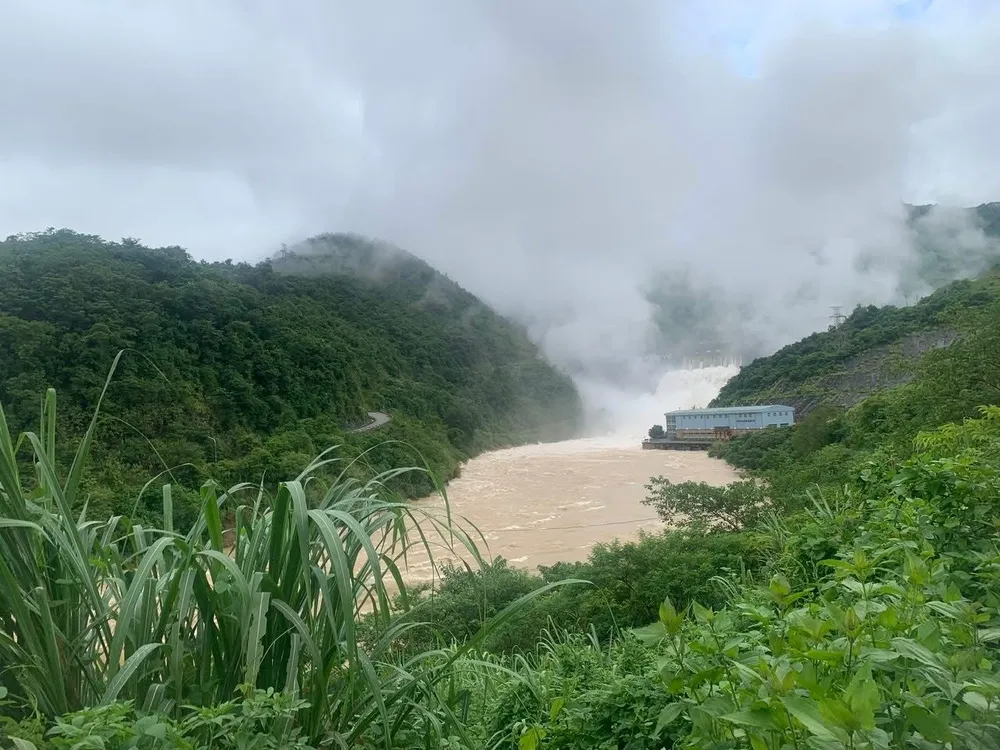
The Department of Dyke Management and Natural Disaster Prevention ( Ministry of Agriculture and Environment ) has just reported on the damage caused by storm No. 3 and floods as of the morning of July 23.
Accordingly, storm No. 3 (Wipha) and its circulation caused widespread damage in the North and North Central regions, especially in the provinces of Nghe An, Thanh Hoa, Hanoi , Ninh Binh, and Hung Yen.
Initial damage to people and property was reported by localities as follows: 1 person missing, 1 person injured due to flood in Nghe An province.
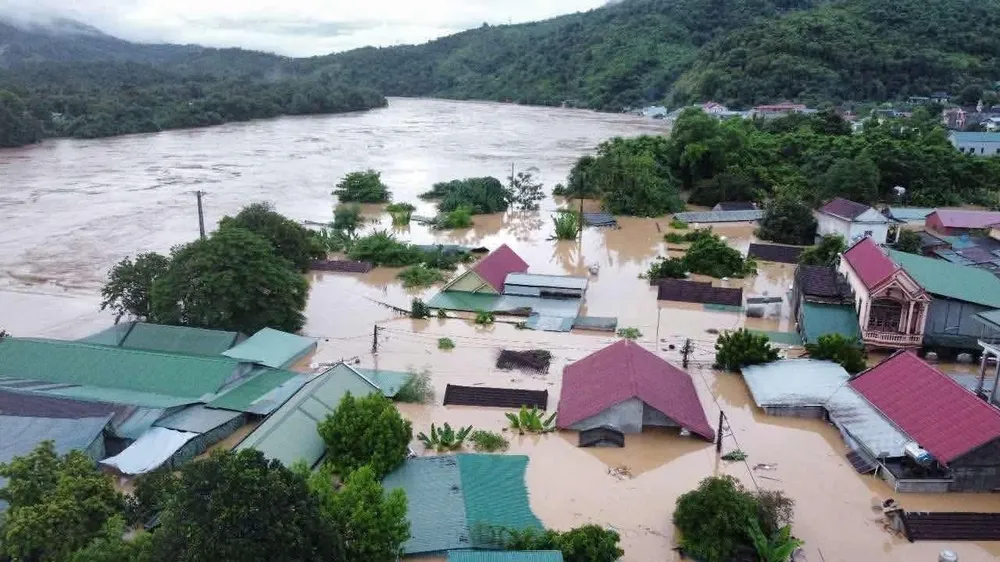
420 houses had their roofs blown off or were damaged by the storm, including 251 in Thanh Hoa and 161 in Nghe An. The entire region has more than 119,000 hectares of rice flooded, of which Ninh Binh suffered the most damage with over 74,000 hectares. Localities are urgently operating pumps to drain the water.
Regarding dykes, 6 incidents have been detected so far, of which two serious incidents occurred in Hanoi: The right dike of Cau River (Da Phuc Commune) has a 20m long longitudinal crack (the locality has set up a checkpoint to prohibit vehicles from passing). The right dike of Red River (Phuc Loc Commune) has a 600m long crack (which occurred in 2024 and is now continuing to expand); the entire area has been fenced off.
In Thanh Hoa and Ninh Binh provinces, many dike slope collapses and culvert incidents occurred: the West dike of Cung River, Tam Diep canal dike, Nam Quan Lieu dike, Vuc Buu culvert... Localities have initially handled the situation by building soil sacks, driving bamboo stakes, and filtering sinkholes.
Notably, Ban Ve hydroelectric reservoir (in Nghe An province) had a flood peak at 2:00 a.m. on July 23, reaching 12,800 m³/second, exceeding the flood control level and "exceeding the 5,000-year frequency".
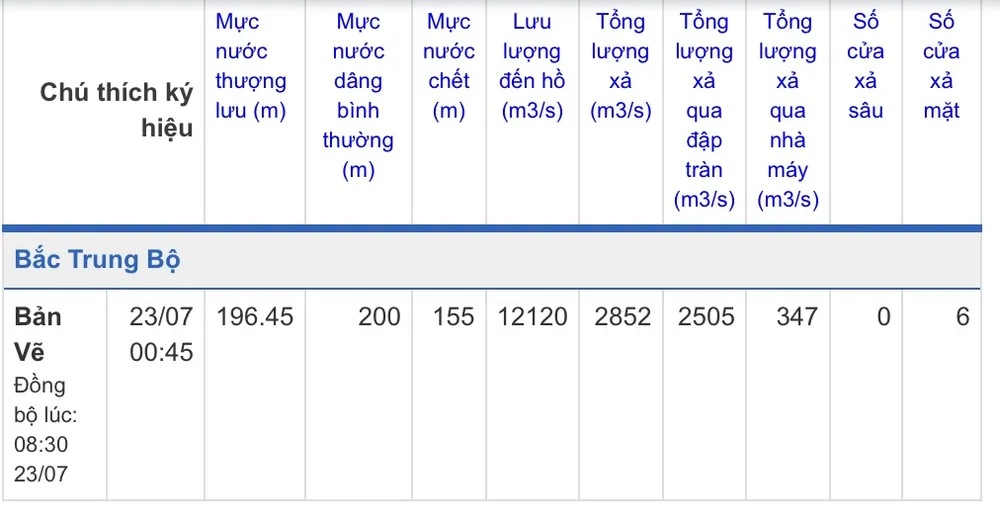
According to a hydrologist, the phrase “exceeding the test flood and exceeding the 5,000-year frequency” is not a data error but a hydrological term, indicating the extreme level of the flood. “5,000-year frequency” means that the flood has a probability of occurring once in 5,000 years (equivalent to 0.02% per year). This is an extremely rare flood level, requiring proper technical regulation to ensure safety for the project and downstream.
The Ministry of Agriculture and Environment said that Ban Ve Lake had to open its floodgates from the afternoon of July 22 to regulate. This morning, July 23, the lake's water level was still high (but the total flood water had decreased significantly) and was being discharged at 4,351 m³/second to ensure a balance between the safety of the project and flood control to help downstream areas.
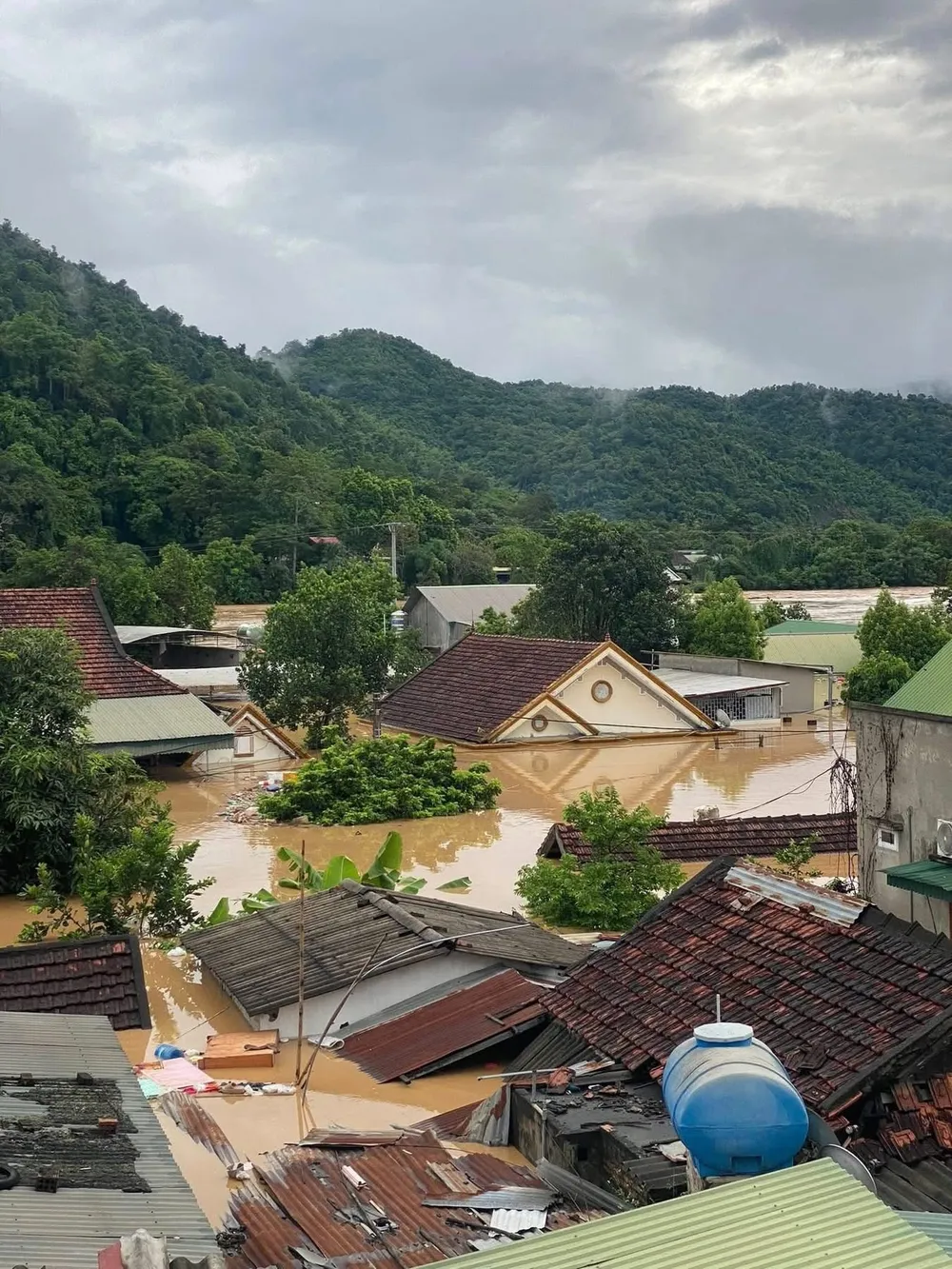
The Department of Dyke Management and Natural Disaster Prevention also said that the entire region from the North to Ha Tinh has 4,487 irrigation reservoirs, most of which have been filled with water at high levels, especially the reservoirs in Nghe An which are basically full. The current water storage capacity is 56-85% of the design capacity, posing a potential risk of insecurity when there are more heavy rains.
Source: https://www.sggp.org.vn/lu-vuot-tan-suat-5000-nam-la-gi-post805034.html






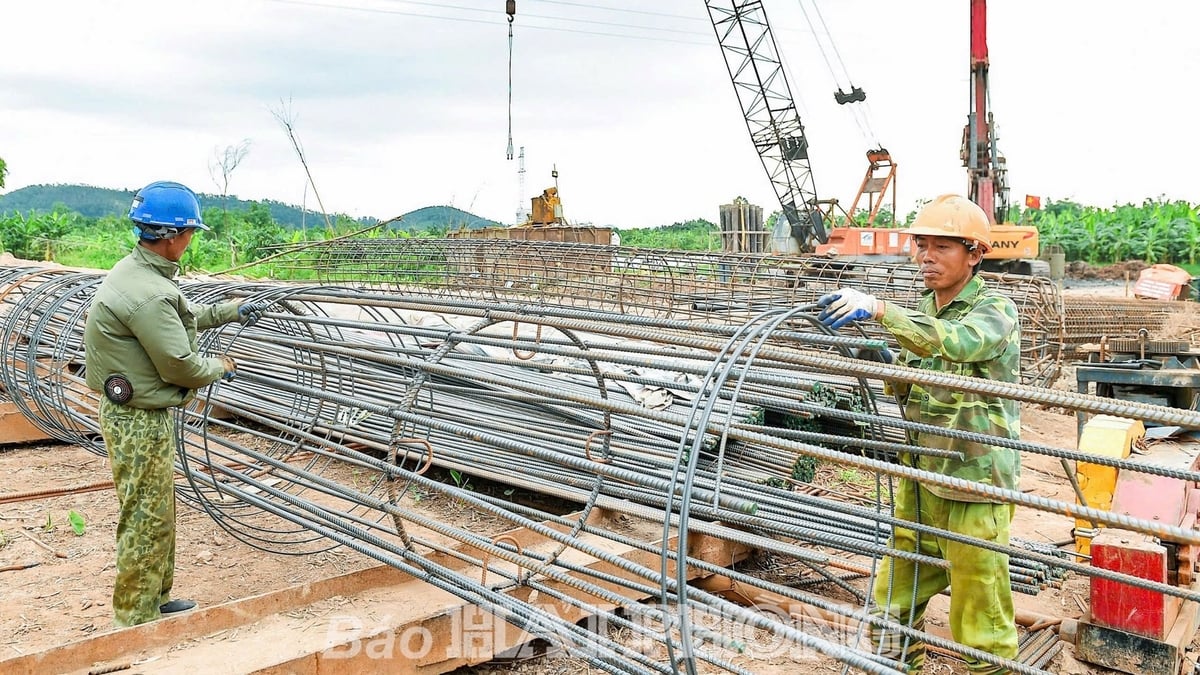





















![[Photo] Signing of cooperation between ministries, branches and localities of Vietnam and Senegal](https://vphoto.vietnam.vn/thumb/1200x675/vietnam/resource/IMAGE/2025/7/24/6147c654b0ae4f2793188e982e272651)



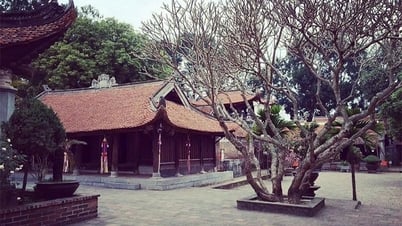





































































Comment (0)